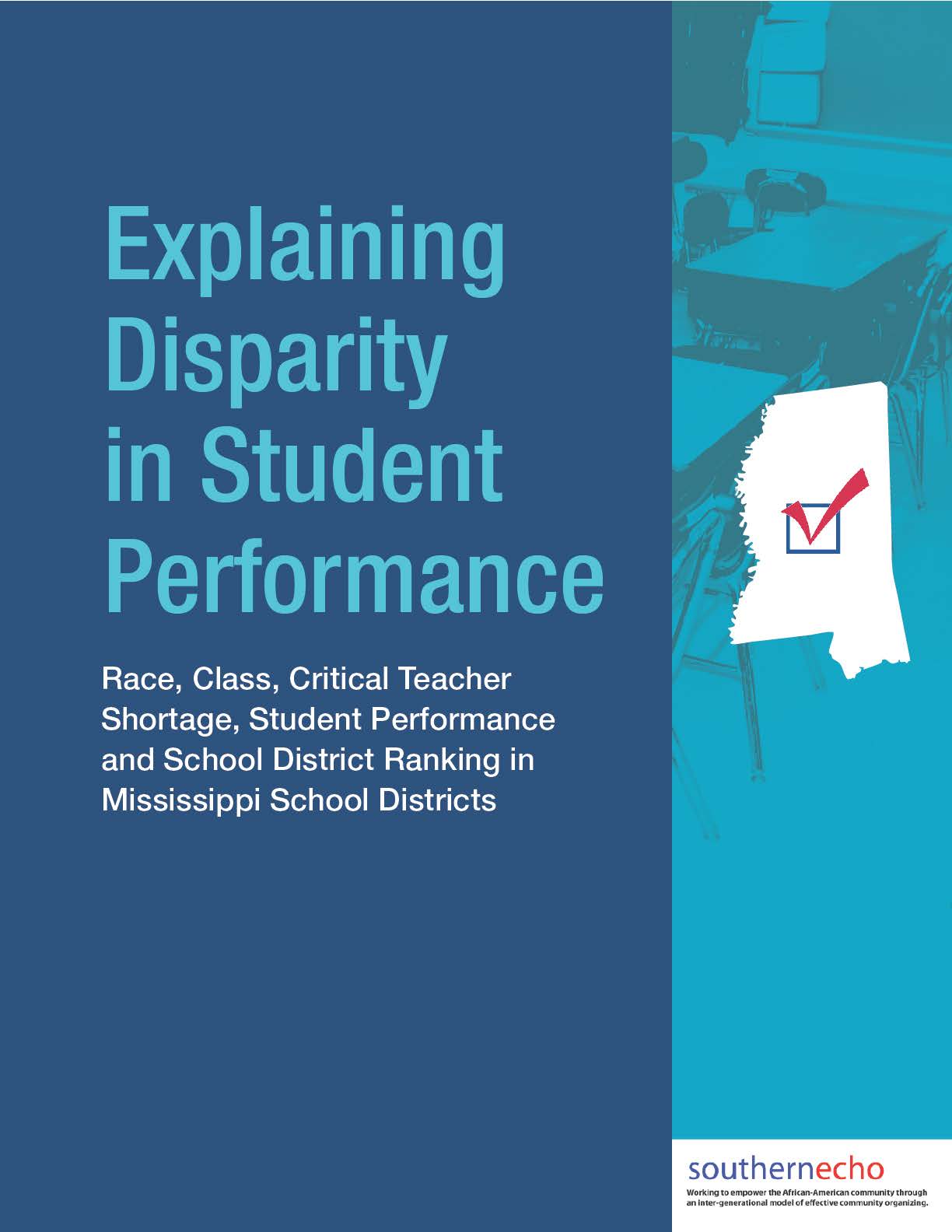 On Thursday, February 19, 2015, Southern Echo and the MS Delta Catalyst Roundtable released a new report “Explaining Student Disparity in Student Performance: Race, Class, Critical Teacher Shortage, Student Performance and School District Ranking in Mississippi School Districts” followed by a Twitter Town Hall discussion from 3:30pm to 5:00pm CST. We are providing you with an advanced copy of the report in hopes that you will help support its release.
On Thursday, February 19, 2015, Southern Echo and the MS Delta Catalyst Roundtable released a new report “Explaining Student Disparity in Student Performance: Race, Class, Critical Teacher Shortage, Student Performance and School District Ranking in Mississippi School Districts” followed by a Twitter Town Hall discussion from 3:30pm to 5:00pm CST. We are providing you with an advanced copy of the report in hopes that you will help support its release.
The report documents that:
· Educational Opportunity in Mississippi is skewed and distorted by race, class, critical teacher shortages and the failure of the state to adopt effective policies to remedy the impact of past discrimination based on race and class.
· The driving forces underlying school district and student performance are low wealth in the community and student poverty.
· Student under-performance is concentrated in school districts with the highest levels of student poverty and the highest order phentermine online cheap concentration of critical teacher shortages.
· The concentration of student under-performance, student poverty, community poverty, and critical teacher shortages is in majority black school districts.
The charts, graphs, and tables in this report also reveal the direct correlation among school district grade rankings by the Mississippi Department of Education, failing schools, critical teacher shortages, student poverty and majority black school districts.
In short, the factors of school district and student performance, poverty, critical teacher shortages and race are integrally entwined and interdependent in the present context.
At the same time, in the highest wealth districts with the fewest students in poverty, there are no reported critical teacher shortages, there are no reported failing schools or school districts and student proficiency levels in math and reading are the highest in the state.
The charts and tables in the report also show the correlation among these factors and the quality of housing, family income, and level of adult educational attainment.

